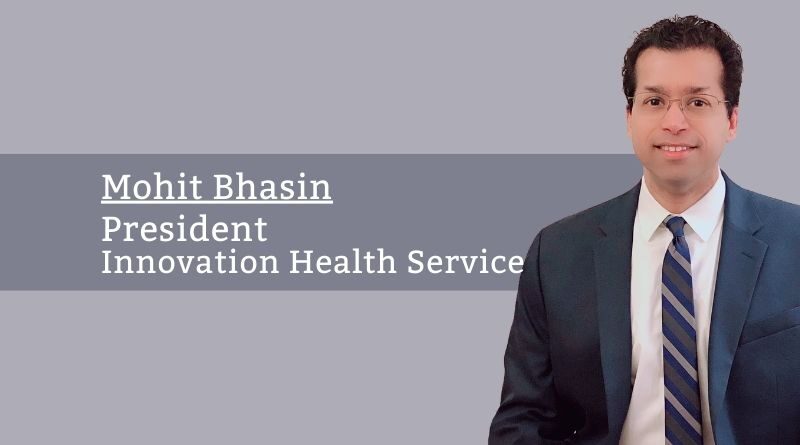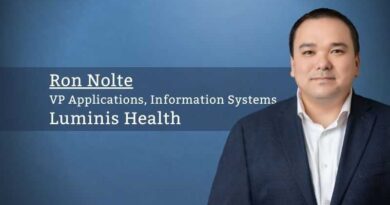Innovation can take decades, then decades can happen in weeks
By Mohit Bhasin, M.D., President, Innovation Health Service; Medical director, advanced cardiovascular imaging, Sentara heart hospital
Digitization modernizes our world, yet at a glacial pace within the buildings filled with sick people we call hospitals. In high-risk cardiac imaging, hospitals have underinvested in diagnostics. Cardiac CT, in clinical trials accumulating for a decade, shortens the several day evaluations for patients with chest pain and shortness of breath, to minutes, with 99% accuracy, saving nursing costs and allowing doctors to diagnose heart disease safely through the night, in a continuous pathway, unlike stress testing that halts at 4 pm. But only if this 3D high-definition scan, acquired in 4 seconds on modern scanners, makes it to the retinas of experts.
Coronary disease is the number one killer. Yet cardiac imaging stagnated until November 2021 when the American College of Cardiology (ACC) published the 2021 Chest Pain Guidelines, finally elevating cardiac CT to the highest recommendation ‘Class I level of evidence A’, based on a demonstrated a 40% reduction in heart attacks using cardiac CT versus traditional nuclear stress testing. This technology that hasn’t changed since the 1980s and is still used to evaluate 67% of chest pain in the US. Yet, the UK made these guideline changes in 2015.
For sixteen years as a cardiologist and President of the telecardiology firm Innovation Health Service (IHS), and medical director of cardiac CT-MRI at an adult heart hospital and congenital imaging at a children’s hospital in Virginia, I’ve sweated over life-threatening scans of torn aortas, cardiac trauma, and coronary blockages in patients presenting to emergency departments. At 6 million episodes per year in the US, chest pain is a common high-risk complaint with multiple life-threatening causes possible. The tests to evaluate the thorax can be consolidated into a DICOM file that reveals the ejection fraction, coronaries, great vessels, and lungs in a 7-19 minute review. Yet, experts are scattered around North America. But, in 2022, all are connected to internet browsers and smartphones, willing to help patients across state lines.
Ironically, I have a license to deliver 200 joules of electricity to the failing heart, but not to get a DNR status from another hospital’s EMR.
Anticipating a workforce shortage, we founded a digital collaborative, Innovation Health Service to train and connect cardiac CT imagers with emergency departments. We knew business model innovation has to parallel technology. In large health systems, there’s no good forum where stakeholders brainstorm the thousand small innovations that lead to digital transformation. So, we founded for life-threatening care with a written charter we all signed, as doctors and systems engineers, to push diagnostics forward in North America long-term, with codified norms, including a culture of service, care for the vulnerable, and co-ownership by all involved, to build a digital institution and make long-term bets. We brainstormed with design principles of empathy: for the patient who wants a diagnosis fast with 99% accuracy; for the ED doctor, with hallways of patients that must be triaged to home or admitted to cardiac floors; for the doctors who, once alerted by smartphone, needs to review scans from standard browsers, increasing efficiencies 5X and allowing patients to tap into the largest possible pool of expertise. We tested latency from airport Wi-Fi between Miami and San Francisco and Hawaii, imagining doctors wasting their expertise at gates. We recruited doctors from both coasts, for time-zone-based balancing of workloads. We realized cloud GPUs would be required, but in 2014 GPUs were not enabled in virtual machines capable of running our 3D software, but we forecast this would come with gaming shifting to the cloud. We designed a database that instantly connects patients with specialized experts, like aortic or congenital doctors, overdispersed time zones. We wrote our own code to iterate fast, testing emergency alerts to automate algorithmically. We combed through textbooks on Joint Cognitive Systems engineering and studied safety checklists used in aviation to consider scenarios we hadn’t thought of. We launched a weekly videoconference to review challenging cardiac diagnoses, to reduce human errors of perception and cognition, and raise imagers to mastery. We navigated regulatory hurdles holding back creative disruption, heartened by the market failure agape in front of us and the possibility of improved patient care. Put good people in a mission-oriented culture and great things happen.
Upon full launch in 2019, rapid adoption occurred in hospitals with the growth of 95% over the first year, then accelerated in the pandemic, getting patients out of the ED and decompressing telemetry beds without boarding patients for stress tests, requiring less nurses. In addition, we achieved a median turnaround time of 38 minutes for a patient to get a report, versus the regional standard of 24-48 hours. In February 2022, we presented our results at the ACC Cardiovascular Summit February to acclaim. Given that a standard coronary CT provides a warranty period of 3-5 years after a routine test, the implications are staggering for what could be achieved ahead.
Climbing the learning curve to prove that a networked team of imagers and engineers can scale a digital practice to deliver emergency diagnostics 24/7 has been thrilling. Now that ACC Guidelines have caught up to the evidence, the clinical implication is that diagnostics, including the reduction in myocardial infarction from cardiac CT, can be scaled through the night by instantaneously matching idle physician expertise with patients in need.
We’re just getting started. We’re looking at the benefits of 5G and computer vision AI as a safe second reader for preliminary reporting, facilitated by transformers. Healthcare is a simulacrum of a system, over-regulated in many areas and unregulated in other important ways: there is no regulation that requires treatments with proven survival benefits approved by insurance companies (like coronary ct overstress testing ) or during a pandemic, they suspend their abhorrent practices of pre-authorization barriers to patient care; or even that in emergencies a doctor should get rights to any information that might save a human life. Ironically, I have a license to deliver 200 Joules of electricity to the failing heart but not to get a DNR status from another hospital’s EMR. Culture in healthcare is important, and values, and technology must serve the needs of patients first. In complex environments, this can be lost. But there’s hope for innovation and ultimately for our patients.




Pingback: Innovation can take decades, then decades can happen in weeks – IHS President, Mohit Bhasin, MD | Innovation Health Services (IHS)